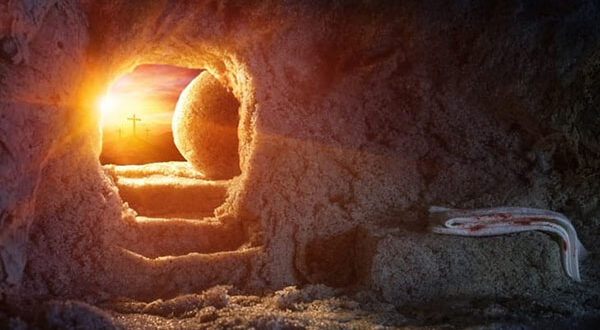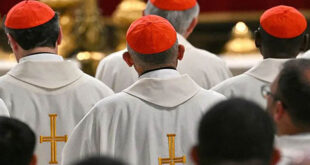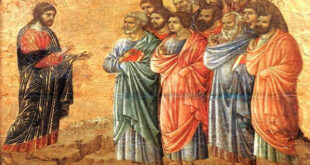The resurrection of Jesus Christ is the heart of Christianity, the event that gives meaning to the Christian faith. St. Paul made it clear when he wrote: “If Christ has not been raised, our faith is in vain” (1 Corinthians 15:14). The resurrection is not just one historical event among many; it is the foundation upon which Christian hope is built. But are there proofs that this event actually happened? How can we trust in something so miraculous and transcendent? This article explores the various proofs of Jesus’ resurrection, not only from a historical perspective but also from theological and spiritual angles, helping believers find answers to their questions and apply these truths to their daily lives.
1. Historical Proofs of the Resurrection
Over the centuries, scholars have approached the topic of Jesus’ resurrection from different angles. Although faith does not depend solely on historical evidence, Christianity maintains that this event occurred in history and, therefore, can be analyzed like any other historical fact.
a) The Testimony of the Gospels
The four canonical gospels (Matthew, Mark, Luke, and John) provide detailed accounts of the resurrection. While there are small differences in the details (as is common with eyewitness testimonies), the core is consistent: Jesus was crucified, died, and was buried, but on the third day, He appeared alive to His disciples. These narratives were not written as myths but as eyewitness testimonies of people who knew Jesus in life and saw Him after His death.
b) The Empty Tomb
One of the most compelling historical proofs is the empty tomb. If Jesus had remained in the grave, it would have been easy for the religious leaders and Roman authorities to refute the apostles’ claims by presenting the body. However, they did not do so because the tomb was empty. Even contemporary Jewish accounts did not deny the empty tomb but offered alternative explanations, such as the theory that the disciples stole the body, which seems unlikely given the fear and confusion they were experiencing at the time.
c) The Appearances of the Risen Jesus
After the resurrection, Jesus appeared to many people at different times and places. St. Paul, in his letter to the Corinthians (1 Corinthians 15:3-8), lists a series of witnesses, including Peter, the Twelve apostles, over five hundred brothers at once, and finally himself. These appearances were not collective hallucinations, as they occurred in various situations and to a large number of people. Moreover, those who saw the risen Jesus not only recognized Him physically but also experienced a profound transformation in their lives.
d) The Transformation of the Disciples
Before the resurrection, the disciples were filled with fear, hiding for fear of reprisals. However, after encountering the risen Jesus, these same men became bold witnesses, willing to suffer and die for proclaiming that Jesus had risen from the dead. This radical transformation of the disciples is difficult to explain if they had not experienced something extraordinary. No one is willing to die for a lie they know to be false.
2. Theological Significance of the Resurrection
Beyond the historical evidence, the resurrection of Jesus holds profound theological meaning. It is not just an extraordinary event in history but represents God’s definitive victory over sin and death.
a) The Fulfillment of Scripture
The resurrection was not an isolated event or an unexpected surprise. Throughout His ministry, Jesus had predicted His own death and resurrection (Matthew 16:21, Mark 8:31). Moreover, the Old Testament already contained prophetic hints that the Messiah would suffer, die, and rise again (Isaiah 53, Psalm 16:10). Jesus’ resurrection is the fulfillment of God’s promises, a sign that He is faithful and keeps what He promises.
b) Victory Over Sin and Death
In the resurrection, Christ triumphs over death, humanity’s greatest enemy. This event is not just the resuscitation of a body but the inauguration of a new creation. In the risen Jesus, we see the foretaste of what awaits all believers: eternal life and the resurrection of the dead. This is the great hope of Christianity: that death does not have the last word and that, in Christ, all who believe in Him will be resurrected to new life.
c) The Exaltation of Jesus as Lord
The resurrection also marks the beginning of Jesus’ exaltation. After rising, Jesus ascended to heaven and sat at the right hand of God the Father as Lord of all creation. This means that Jesus is not just a prophet or moral teacher but the Son of God, the risen Lord, who has power over all creation. This reality changes our relationship with Him: we not only follow His teachings but also worship Him as our Savior and Lord.
3. Practical Applications for Daily Life
Jesus’ resurrection is not just an abstract theological fact or a distant historical truth. It has practical and profound implications for our daily lives as Christians.
a) Hope Amid Suffering
Jesus’ resurrection gives us unshakable hope, especially in times of suffering and pain. We know that, just as Jesus suffered and died, we too will face difficulties and trials in this life. However, the resurrection assures us that suffering and death are not the end of the story. Just as Christ was raised, so too will we be raised with Him.
b) A Call to a Transformed Life
The power of the resurrection is not just something we await in the future but also something available to us here and now. St. Paul writes that those who have been baptized into Christ have been buried with Him in His death in order to rise to a new life (Romans 6:4). This means that we are called to live differently, as people transformed by the power of the resurrection, leaving sin behind and embracing a life of holiness.
c) The Mission to Proclaim the Resurrection
Just as the disciples were sent to proclaim Jesus’ resurrection to the world, we too are called to be witnesses of His resurrection. This does not mean merely sharing the story of the resurrection but living in such a way that our lives reflect the reality of the risen Christ. Every time we show love, forgiveness, compassion, and justice, we are bearing witness to the fact that Jesus is alive and continues to act in the world.
Conclusion
The resurrection of Jesus is the foundation of the Christian faith, a reality that transforms our understanding of life, death, and eternity. The historical, theological, and spiritual proofs of the resurrection give us the certainty that this event truly happened and that it has a profound impact on our lives today.
As we meditate on the resurrection of Christ, we are called to live with renewed hope, trusting that the power that raised Jesus from the dead is also at work in our lives. May each of us, inspired by this great truth, become living witnesses of the power of the resurrection, bringing the love and light of Christ to the world around us.






